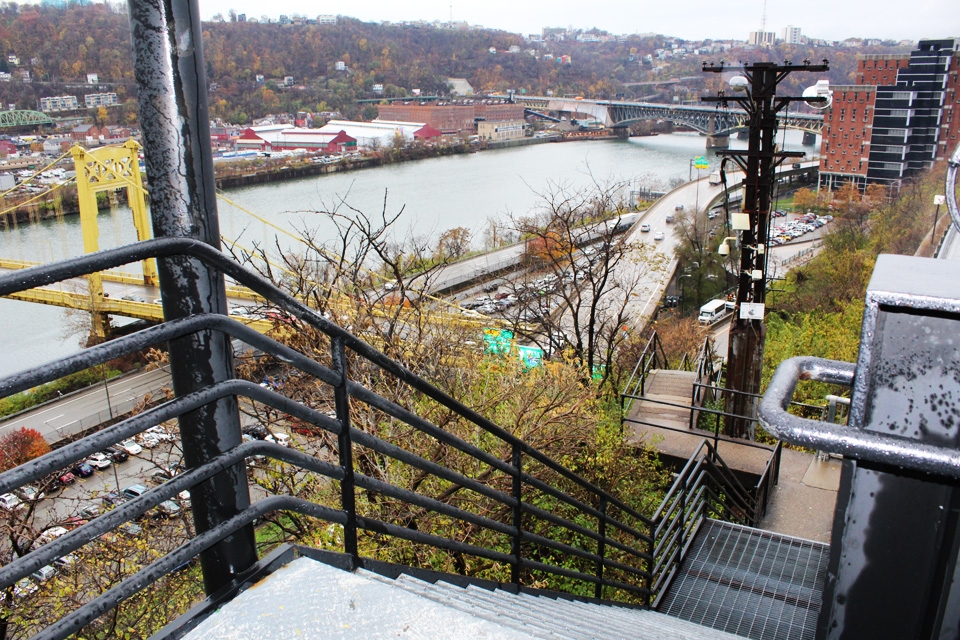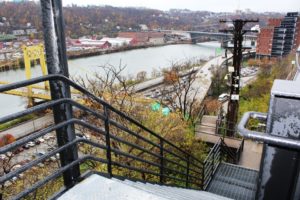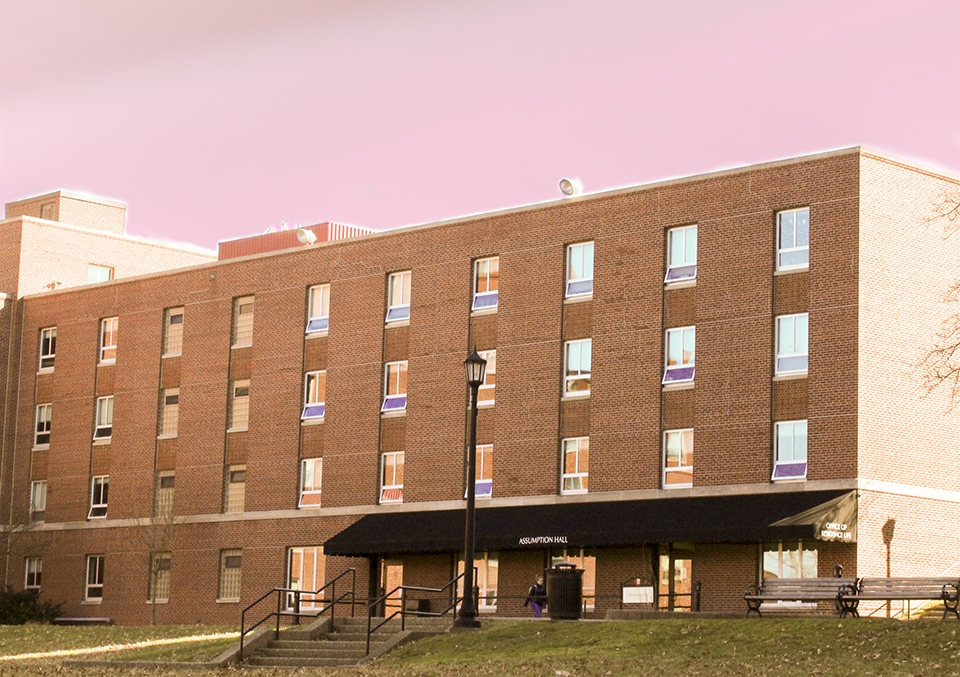

The Fort Pitt Incline operated in the space now occupied by the City Steps, also known as the South Side Steps.
By Elsa Buehler | Staff Writer
Most Duquesne students are very familiar with the South Side Steps, officially called the City Steps, that lead to the 10th Street Bridge. What many may be surprised to know is that the steps used to be an incline, which probably would be preferable to the steps that many students use on a weekly or daily basis.
The Duquesne and Monongahela Inclines are the only two remaining inclines of more than 20 that once lined Pittsburgh’s hills. Many other Pittsburgh inclines closed due to lack of demand, but this one was destined to go out with a bang.
The Fort Pitt Incline was built in 1882 and destroyed in a violent fire about three years after it had gone out of service, according to the July 29, 1903, issue of The Pittsburgh Gazette. “Car’s Last Trip at Terrific Speed Down the Plane,” read the briefing’s title, a now humorous and vivid description of the event.
Joe Thompson, an expert on Pennsylvania cable car lines, wrote that the Fort Pitt Incline was 350 feet long, had an elevation change of 135 feet and cost $97,936 to build. Thompson estimated this to be greater than the cost of construction alone.
On Oct. 23, 1882, the Pittsburgh Commercial Gazette reported on the incline’s opening, announcing the fixed fare to be 3 cents per passenger, with different pricing for boarding vehicles, such as horse-drawn carriages.
Just eight short years later, the same publication declared the Fort Pitt Incline to be “ostensibly … out of business,” after even dedicated patrons admitted the trip to be a safety risk. Ownership of the property had been acquired recently at a sheriff’s sale for much less than its value at just $24. The new owner then leased the property to the two engineers who had been running the incline.
Even further, the incline had recently lost control, striking the bumpers and causing the engineer on the scene to jump out of his cab and a horse and buggy to be bumped off, although no damage was done. Just two years before, the incline had “played the same trick”; as a result, a young woman’s arm was broken, and the then-engineer simply walked off the premises, never to return.
Seeing the laughably disastrous state of the property — as well as the numerous claims against the company and the $6,000 in interest it had accumulated — a representative of the bondholders came to take possession of the incline but could not even find an authorized representative of the owners. The incline was still wrecked from the latest incident and “[had] not been attractive for passengers for some time.” It was decided that no actions would be taken to either destroy or rebuild it.
According to the aforementioned 1903 Pittsburgh Gazette article, the vacant area became a hangout spot for “loafers,” who vandalized the cab car and stole brass from the machines. Several were convicted on minor charges earlier in the year, along with a man who was greatly annoyed by their shenanigans and set fire to the old waiting room in a fit of rage.
Finally, one day in late July 1903, the Fort Pitt Incline burned down once and for all. The cars, still stopped on the steel cables midway between the stations despite years of disuse, came hurtling down the tracks when the fire caused the cables to snap.
The boiler room was believed to be the source of the fire, which then spread rapidly due to the abandoned, oil-soaked floors. The disruption caused one man nearby to fall from the cliffside. Amazingly, however, he was the only one affected by the destruction and suffered very minor injuries. With that, the Fort Pitt Incline and most of its legacy were gone forever.
If all Duquesne students had to do today was cross Route 376 via the the Duquesne Walkway and pay a 3-cent fare to get back and forth from campus to the end of the 10th Street Bridge, South Side commuters would have it a little easier, to say the least. Unfortunately, the reality remains that the largely unsuccessful Fort Pitt Incline met its fiery end 113 years ago, not destined to return any time soon.




